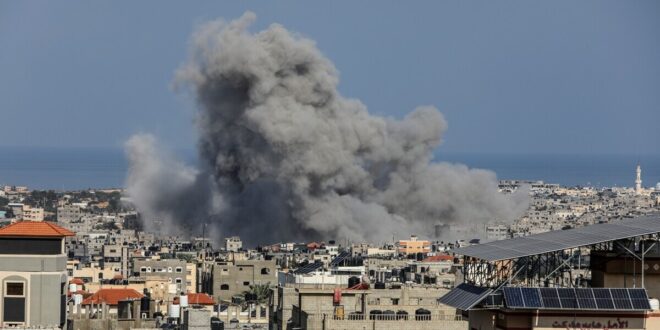Israel has long been defined by its security imperatives, but rarely has the price of war been so steeply visible in its economy as it is today. In 2024, Israeli military expenditure soared to 8.8% of GDP—a staggering figure for a developed economy. Projections suggest that defense spending could average around 11% of GDP each year for the rest of this decade. What once was a manageable defense burden is morphing into a permanent war economy.
Guns Over Butter
This surge in military spending is already reshaping Israel’s domestic landscape. Infrastructure projects have been delayed, social welfare programs cut, and long-term development plans shelved. In effect, the country is mortgaging its future growth for present security. The government’s budget deficit could hover around 16% of GDP annually—a level that would alarm even debt-tolerant advanced economies.
Public debt, which could surpass 70% of GDP in 2025 before tapering off later in the decade, adds another layer of fiscal fragility. For an economy that once prided itself on disciplined budgeting, this represents a profound shift.
The Labor Strain
The human dimension of Israel’s economic crunch is equally stark. The war effort mobilized some 360,000 reservists, draining the workforce of skilled laborers and professionals. Simultaneously, the suspension of 140,000 Palestinian work permits from the West Bank compounded shortages in construction, agriculture, and low-wage industries that rely heavily on this labor supply.
Meanwhile, the Supreme Court’s June 2024 ruling mandating the conscription of ultra-Orthodox men threatens to inflame already volatile social tensions. Integrating a community historically shielded from military service into Israel’s armed forces could destabilize fragile political coalitions while further straining the economy.
Confidence Cracks
The broader public is beginning to feel the strain. Consumer confidence collapsed after the war’s escalation, translating into reduced household spending and slower economic growth. The “Start-Up Nation” model, which once fueled Israel’s global brand, is faltering. Between October 2023 and July 2024, some 8,300 high-tech workers—about 2.1% of the sector’s workforce—left the country. In a nation where high-tech is the backbone of exports and innovation, this brain drain carries consequences far beyond the short term.
A Strategic Choice
Israel’s leaders justify these sacrifices as essential for survival. Few doubt the severity of the security threats it faces. Yet a state cannot indefinitely divert over a tenth of its economy to defense without eroding the very foundations that make defense sustainable: innovation, growth, and social cohesion.
The danger is that Israel risks locking itself into a self-perpetuating cycle—high military spending fuels deficits, deficits weaken growth, weakened growth drives capital and talent abroad, and the resulting insecurity reinforces the case for even more military spending.
The War Dividend vs. the Peace Dividend
In the 1990s, following the Oslo Accords, Israel briefly enjoyed a “peace dividend”: reduced defense spending and a flourishing economy that integrated into global markets. Today, that dividend is reversed. Israel is entering an era of permanent mobilization, where economic policy is subordinated to military necessity.
The real test for Israel is not only how it confronts external enemies but how it balances its guns with butter—security with sustainability. Otherwise, the country risks discovering that the greatest threat to its future was not on the battlefield, but in the slow erosion of the very economic vitality that made it strong in the first place.
 Geostrategic Media Political Commentary, Analysis, Security, Defense
Geostrategic Media Political Commentary, Analysis, Security, Defense





